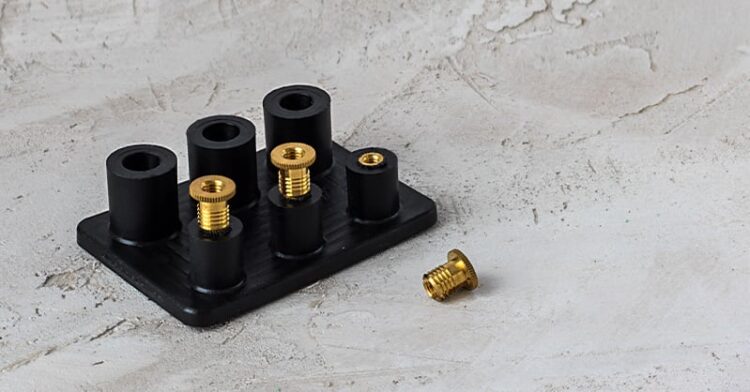How can you ensure a robust and durable connection when assembling metal and plastic components? What methods are available to enhance the longevity and reliability of these connections? One increasingly popular solution is the use of threaded bushing or inserts.
But what exactly are threaded inserts, and why are they so beneficial in manufacturing and assembly processes? In this article, we will explore the various advantages of using threaded bushing in metal and plastic components. It further highlights their role in improving these assemblies’ strength, durability, and efficiency.
Enhanced Strength and Durability
One of the primary advantages of using threaded bushing is its significant improvement in strength and durability. When screws or bolts are repeatedly inserted and removed from a material, the threads can wear out over time. This is particularly problematic in softer materials like plastic or softer metals like aluminum.
Threaded bushing provides a more robust threading solution that can withstand repeated use without degrading. The insert is made from a stronger material, such as stainless steel or brass, and is less prone to wear and tear. By using threaded bushing, the life of the component is extended, and the risk of thread stripping is greatly reduced.
Improved Load Distribution
Another significant benefit of bushing is its ability to distribute loads evenly across the connection. When a screw or bolt is threaded directly into a material, the load is concentrated on the threads within that material. This can lead to deformation or failure under high stress in softer materials.
These bushings help by distributing the load over a larger area, reducing the stress on the material itself. This results in a stronger and more reliable connection, especially in applications where the component is subjected to heavy loads or vibrations. The even load distribution of threaded bushings makes them ideal for high-stress environments.
Easy Maintenance and Repair
Threaded bushings also offer significant advantages in terms of maintenance and repair. These bushings can simplify the process when components must be disassembled and reassembled frequently. Since the threads within the insert are more durable than those cut directly into the material, they are less likely to become damaged or stripped.
If a threaded bushing does become damaged, it is much easier to replace than repair the threads within the component itself. This reduces downtime and maintenance costs, making them cost-effective for many industries. The ability to replace inserts rather than entire components also contributes to more sustainable manufacturing practices.
Versatility in Application
Threaded bushings are highly versatile and can be used in various applications. They are suitable for metal and plastic components, making them a go-to solution across various industries. For instance, threaded inserts for metal are used in engine components, interior assemblies, and electrical systems in the automotive sector to ensure solid and reliable connections.
In the electronics industry, threaded inserts for plastic are commonly used to assemble enclosures, circuit boards, and other delicate components where precision and durability are crucial. Their versatility allows manufacturers to standardize their assembly processes across different materials and applications, improving efficiency and consistency.
Cost-Effective and Time-Saving
While bushings offer many technical advantages, they are also cost-effective and time-saving. Installing threaded bushings is typically straightforward and can be easily integrated into existing manufacturing workflows. Inserts reduce the need for more complex and time-consuming methods, such as welding or adhesive bonding, while providing a robust and reliable connection.
Additionally, threaded bushing can reduce material costs. For example, using plastic components with threaded bushing instead of more expensive metal parts can achieve the same strength and durability at a lower price. The ease of installation, reduced material costs, and maintenance make threaded bushings an economically attractive option for many manufacturers.
Threaded bushings offer numerous advantages in the assembly of metal and plastic components. Their versatility makes them suitable for various applications across various industries, from automotive to electronics. By choosing threaded bushings, manufacturers can ensure that their components are built to last and provide reliable performance throughout their lifecycle.

